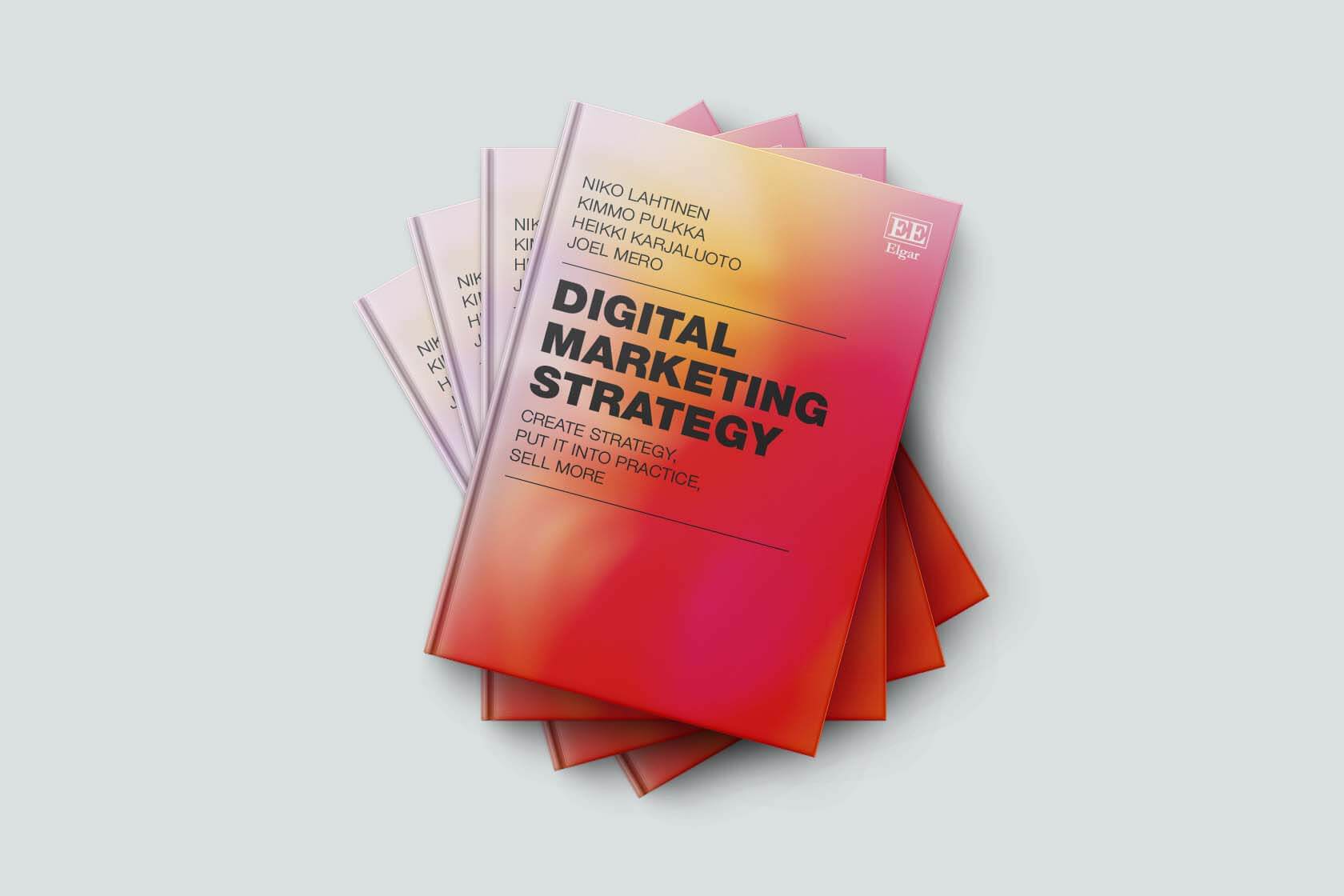Marketing automation is a general term, which in short means automating the marketing processes so that human work is not needed in routine and regularly recurring processes.
If you want to summarize marketing automation even more succinctly as a term, then it is the distribution of the right content to the right people at the right time. That is, it is scaling personalized marketing and automatically distributing content.
What does marketing automation actually do? What can you do automatically with marketing automation? Does automation take all the work away from people?
Marketing automation enables a lot of things, but at least in my own perspective, there is still no future where people would like to work exclusively with machines. On the other hand, people often choose an immediate answer from a machine rather than a slow response from a person.
In practice, marketing automation is most clearly reflected in the fact that it enables the use of many measures that are too laborious for human work in marketing. For example, marketing automation can mean personalizing messages and content early in the purchase process before it makes sense for the actual employee to spend their time writing a personal message. Another example is the profiling of customers based on the functions performed on the website, in which case automation recognizes the hottest leads and their interests.
Automatic profiling (i.e. segmentation), the seller knows the lead in a certain way even before the first contact. That is a huge advantage for your sales team, as it allows you to have a discussion right from the first call about the things you know are of interest to the lead. Customer service can also take advantage of the data generated by marketing automation, allowing the agent to serve the lead or customer much more personally.
With segmentation, it is also possible to bring leads or customers to different Facebook and Google audiences, allowing them to target a specific type of advertising. However, this requires a volume of at least 1.000 people per audience to make advertising smart and develop it based on data.
In short, marketing automation enables more personalized and timely marketing, customer service and sales. This, on the other hand, naturally leads to better results and a better customer experience, as in today’s flood of messages only personalised and timely marketing can stand out.
Who is marketing automation suitable for?
I thought about the answer to this question for 10 minutes. I ended up with the following answer. Marketing automation is suitable for any kind of company. It suits your business, even if you can only take one customer a year. Of course, there is no point in cooperating with a marketing agency. Still, you should take advantage of marketing automation.
This is because the scale of marketing automation systems is really wide. For example, the price of ActiveCampaign starts at €9/month, while with some other tools prices start around €1.000/month. It is actually “stupid” not to use the tool for that €9 price because you get so many benefits from it.
What these benefits are and what marketing automation can offer to your particular business will become clear as I go through the benefits of marketing automation below.
The benefits of marketing automation for the company
In the MRACE model, marketing automation affects the Convert and Engage phases. In the Convert phase, more than one lead can be turned into a trade, and in the Engage phase, the existing customer base can be engaged.
The most common style of utilizing marketing automation is as follows. For example, your company makes a downloadable buyer’s guide. When your potential customer downloads the guide, they end up in the marketing automation system. They start getting ready-made emails telling them more about what their downloaded guide is about.
What is the use of this?
1) You will get to know the lead before you have even talked to them.
The marketing automation system recognizes what messages the lead has opened, what links they have clicked on and what pages they have clicked on your website. When a salesperson clicks a lead open in the system, they can see directly if the person has read a lot of blogs, references, and responded to messages about that topic. This makes it easy for the seller to determine which issues are of interest to the lead.
This can, of course, still be automated so that when the system recognizes that a lead is interested in a specific topic, they will be added to the segment of the topic in which the seller does not even have to look at the history of the lead’s behaviour.
2) The hottest leads can be found quickly
The hottest leads can be easily found in a large mass, as automation monitors the lead’s behaviour on your website. If a person downloads a buyer’s guide, reads it immediately, examines your references and reads articles, then such a lead is significantly hotter than the lead that downloaded the guide but ultimately did not even read it.
This allows sales to focus first on the hottest leads of all, which are more likely to be clustered into a trade.
3) The time spent on sales prospecting and other routine work decreases
Routine work takes less time because automations take care of it for you. Here are some examples.
The hottest leads rise to the top of the sales playlist in CRM
The basic information of the lead has already been mapped, such as company size, industry, lead title, etc. Mapping can be done using e-mail series and queries. There are numerous ways to entice the leads to provide more information about themselves.
The company’s data can be further enriched by automatically exporting the lead to Vainu and importing the data into the automation system
Messages sent by sales can also be automated. For example, when a lead is marked as lost in CRM, you can send an automatic thank you message to the lead
4) The quality of leads is improved
Lead quality improves because automatically outgoing emails teach the lead more about the service you provide. However, the message should not be just a sales pitch, but should focus on the leads and solving their problems.
After the lead has gone through a series of 3-5 messages after downloading the guide, they will know significantly more about the topic than before downloading the guide. In this case, the lead already knows how they can benefit from the solution offered by your company. When a salesperson calls a lead, the input angle of the call does not have to start from selling the solution because the lead already knows they need it. The call even more maps out the real need for the lead and them make the right choice, that is, to choose your company as a service provider.
For example, we updated a buyer’s guide for our customers, and 50% more of those who downloaded the new guide wanted an appointment with our customer company. So it is all about the angle of entry.
5) The customer experience improves, increasing the value of your brand
Marketing automation is also a great way to improve your digital customer service. When a lead joins your email list, marketing automation starts to map the need for a lead. That is, why they joined the list. A lead can share their needs either directly by responding to a survey sent by automation or indirectly by their behaviour. When automation recognizes a lead’s need or interest, messages are sent to them about that topic.
When the messages sent by marketing automation are purely centred around the lead’s area of interest and the purpose of the messages is to help the lead solve their problems, then marketing does not seem like a compelling sales talk, but a free service. It is a very memorable experience because we do not want to make ourselves available for sale anymore, but we want to do the initial mapping ourselves and choose the right players, services or products to get ahead.
Read more about brand building here.
6) Segmentation allows you to target sales according to your company’s needs, for example
Imagine that your company has three different domains. Two domains are completely overworked six months ahead, but one domain would be sorely crying out for trade. Once marketing automation has identified the leads of interest, salespeople can directly search for all leads that have shown interest in that one domain that needs more trade.
You can also build the next month’s newsletters and other messages so that you can find in your email list attachments all the people who are interested in this domain.
7) Marketing automation brings real-time and transparency to the interplay of sales and marketing
Everything that happens in marketing automation is measurable. Therefore, it is a good idea to set KPI’s so that marketing constantly knows whether the measures are beneficial to sales. If the indicators are wrong, marketing can easily go in the wrong direction. Just looking at the number of downloads or leads in the guide does not make sense, but you should pay more attention to the quality of the leads. The quality of leads can be monitored based on demographic data and behavioural data.
This dialogue can be automated directly, for example by integrating the marketing automation system into Slack or Teams. When marketing produces a lead that meets the desired criteria for sales, Slack or Teams will be notified. Marketing finds that viral content that received a lot of clicks, likes, or downloads was not as significant in terms of sales as content that directly addressed the problem of the company’s target audience.
Such integration is an easy and fast way to bring transparency to the interplay of sales and marketing. However, it is a good idea to always collect real and useful data in the Marketing Dashboard so that you can base your marketing decisions on data and not mutation.
8) Service and engagement of old leads and existing customers
Marketing automation is also an excellent way to better serve your existing customers. If a customer in the seller’s customer’s account shows an interest in your other service based on their behaviour, then it is quite nice for the seller to call and bring up that service.
Similarly, the seller may notice, for example, the activation of an old lead that did not go beyond the first call a year ago. For such a familiar lead, it is easy to call and ask about the timeliness of the acquisition again.
9) It improves the cost-effectiveness of other marketing channels
Imagine investing a lot in Facebook and Google Ads advertising. So you do a lot of paid advertising. When you get a person to click on your website, you hope they will get in touch, of course. The fact is that most people are not ready to contact you yet. The figure is actually 97%. Only 3% are ready to talk to you in more detail.
. At this point, the importance of marketing automation is emphasized. If you do not offer that huge 97% mass any lighter conversion point, like the opportunity to download a guide or attend a webinar, then 97% of the traffic has been “useless”.” However, if you get 10% of visitors to download a guide or otherwise leave their contact information, they will end up in the realm of marketing automation, where automations will work on improving their purchasing readiness. The cost-effectiveness of paid advertising in this way will improve enormously.
What does marketing automation require to work?
Market automation does not automate marketing to reduce resources used for marketing, but the time spent remains the same or increases. On the other hand, the result of marketing in relation to the time spent also increases, so the investment is often profitable. Marketing automation eliminates routine work and frees up time from segmentation and content distribution to content making and strategic planning.
In addition, marketing automation requires four things to work. These include:
1) A lot of content
Automation does not work without content. If your pages only have a service page and a few blog articles from one service, then the content is far from enough. The job of automation is to deliver the right content at the right time, so it is a good idea to have at least a dozen content per topic at the beginning. In addition, the content must be both at the beginning and end of the buying path Upstream content includes, for example, articles focusing on the customer’s problem. The content at the end includes well-made reference stories and service or product pages.
The lack of content also means the system is unable to identify whether the customer is really interested in buying from you because they can only read a few pages related to the topic. Learn here how to build a functional sales funnel using the MRACE model.
2) Contacts for automation
At best, automation will not work if you cannot acquire contacts for automation. Lead magnets are the best way to acquire contacts interested in your company in marketing automation. So you need downloadable guides, webinars, or case studies, for example, to bring leads to automations.
3) Traffic to your site
Of course, you also need to get traffic to your website. The best ways to do this are social media and Google advertising as well as search engine optimization. Keyword research is a great way to get started because it provides the foundation for a buying path that appeals to your buyer persona .
4) A system that integrates with other systems and your CRM
A good tool/software does nothing if the data cannot be transferred to other systems. Therefore, make sure that the marketing automation system integrates with a variety of tools. For B2B or B2C companies themselves, we recommend ActiveCampaign, HubSpot, or Salesforce. For online stores, we recommend Klaviyo and Custobar. For online retailers, we made a
Marketing automation in practice with SDM
How does marketing automation work in practice, for example, in our case, with SDM?
It must be said that marketing automation is often combined with Hubspot because this system also seems to dominate the market in Finland. Or at least Hubspot users are making the biggest ruck of themselves and marketing automation in general. HubSpot has only managed to market itself very well. In fact, the whole term inbound marketing was coined by HubSpot, which is a good reflection of the success of their marketing.
However, Hubspot is not the only option, let alone the most sensible one in all cases. In Finland, digital marketing automation consists of several systems, but ActiveCampaign is mainly responsible for it, from which the information then passes through Zapier to, for example, sales to CRM and Vainu.
Read our ActiveCampaign 101 cross-section, where we deal with the pros and cons of the tool.
What does ActiveCampaign do to us then? In practice, ActiveCampaign acts as an email marketing application that integrates with our website so that we can utilise all the data from the website and email marketing together. ActiveCampaign therefore enables the creation of email automations and certain triggers on the website so that sales can contact customers at the right time.
If you subscribe to, for example, the Search Engine Optimization Buyer’s Guide, you will now receive a download link to your email followed by a series of 3-5 emails providing you with additional information on search engine optimization. In practice, the emails you receive and how often you receive them are affected by whether you open the emails, click on them, and what you do on the website.
As you download the guide, we use Vainu to enrich your business information. This is how we get to know your industry and revenue category. It says a lot about whether you are a potential customer for us.
Let’s say you will then read 5 articles on SEO and visit our SEO landing page. Now automation gives you the tag “Interested in SEO”. With this information, you will be added to the list of contacts in CRM, if, according to Vainu, your company’s information is such that we can be a suitable partner for you in terms of the size of your company.
ActiveCampaign therefore supports sales, enables personalizing marketing according to potential customer behaviour, and provides analytics on how people behave on our page before purchasing.
Challenges of marketing automation
Marketing automation offers a lot of opportunities, but it also has its own challenges, when talking about a market the size of Finland.
A major challenge in marketing automation is that it is not just about marketing, but also about sales. In practice, with the introduction of marketing automation, the entire sales process of the company should change.
CRM should be used more accurately to start certain automations only for leads that have not yet been contacted and vice versa. A more accurate use of CRM and a more systematic sales process are by no means bad things, but they require clear justification for sellers as to why this is done and what benefit it will bring.
Another challenge for many companies is volume. Let’s discuss this in a little more detail.
In fact, how well does marketing automation work at low volumes?
the biggest stumbling block in marketing automation in Finland is simply too low volumes. Let’s say you want to develop your e-mail automation, which often serves as the cornerstone of marketing automation.
You work for a B2B company and your target audience on Facebook is 5.000 people. You make a great ad and drive it in front of your target audience, achieving an almost magical 10% CTR. So 500 people click on your landing page.
You have made a great landing page and 30% of these 500 people will download the guide and thus end up in your email automation. 150 potential customers, cheers!
But how many of those 150 potential customers are really there? On the one hand, it is a quantity from which you can trade a lot, but on the other hand, also so little that it does not yet allow reliable A/B testing of emails or various headers. The development of marketing automation based on data is therefore very slow in Finland’s volumes, although this does not prevent the implementation of marketing automation.
Therefore, low volumes do not make marketing automation superfluous or inefficient. We also use marketing automation. However, this means that many of the things that make marketing automation a superior tool in America play a smaller role in Finland. In Finland, the quality of e-mail messages and headers and the quality of the content to which messages are directed are particularly important. Even with such a small volume, it is possible to receive requests for quotations and contacts well.
What kind of marketing automation is suitable for my company, or is it okay at all?
If you want to make more personalized and timely sales, marketing, and customer service, you should consider introducing marketing automation. At its simplest, implementing marketing automation can mean building email automations to support other marketing. Especially in online stores, email marketing in practice increases the cost-effectiveness of Facebook marketing, for example.
When choosing a marketing automation, you need to define what to look for. Do you want a comprehensive package that covers almost everything, or do you just want to add a small piece to the whole so that you can grow that little piece a little bigger later?
There are up to hundreds of marketing automation systems. To name a few: ActiveCampaign, Marketo Hubspot, Salesforce Pardot etc.
Each of the above is a fairly well-known system. In Finland, however, the most well-known platform is Hubspot, which includes almost everything you need in the same package, from websites to email marketing and sales to CRM. At the other extreme, you will find ActiveCampaign, which offers the most essential features and costs only a fraction of Hubspot.
In terms of value for money, ActiveCampaign is certainly the best system on the market. Or what does email automation, user profiling and website visitors tracking for €9 a month sound like? It costs €740 per month for the same features with Hubspot.
Of course, Hubspot offers a lot more, but the key question is what you want from marketing automation. Do you want to re-create the entire palette and move everything to Hubspot’s platforms, or do you want to start building marketing automation in peace while investing in content production, around which marketing automation ultimately revolves.
Let everyone draw their own conclusions, but in any case, it is good to remember that marketing automation does not make bad marketing good marketing. The basics work regardless of whether you use marketing automation or not. Our own marketing worked completely inbound without marketing automation – although it still works completely inbound after that, but better than before.
If you want to enable marketing automation, read more about marketing automation here!










